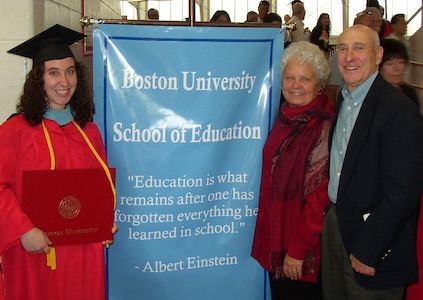By Bob Colyer
“What do you teach?”
“Students.”
“Are you some sort of wise guy?”
“No, just some kind of wise educator.”
Of course I know that the questioner’s intent refers to subject matter. However, I also appreciate the opportunity to respond with a much more relevant answer. While we teach through subject matter, education must always be student-centric. What is “taught” is far less important than what is learned.
All education occurs through trial and error. Formal education or schooling simply narrows the range of trials and errors. Having an effective teacher further narrows this process by providing focus and feedback.
Subject matter, the acquisition of skills and knowledge (writing a paragraph, swimming a stroke) is the lowest of three learning levels, the what of education. It can come from classrooms, but also from books, videos, etc. In fact, it can come from all of one’s life experience. But this in itself is not education. To quote B.F. Skinner, “Education is what survives when what has been learned has been forgotten.”
What does survive beyond skills and knowledge? A higher level covers methods and relationships, the how of dealing with skills and knowledge. On this level the differences between various types of subject matter become less significant. One goal on this level is to avoid pigeonholing, which can be quite difficult. I can recall substituting for the college drama department chair and having a hard time getting past being perceived as anything but “the swim coach.”
Highest of all is the why, the level of values and attitudes that, along with the other two levels, comprise a full education. Values, whether taught or caught, keep the learner’s skills and knowledge in perspective, but more important they should inculcate a desire always to ask, “Is there a better way?”—which is how education leads to progress.
The desire to do something better—or at least differently—can show itself in a variety of ways. E. E. Cummings showed us that space can replace punctuation, and Victor Borge’s take on punctuation remains totally hilarious. In 1968 Dick Fosbury showed that high jumping backwards was forward progress. In 1935 Jack Sieg showed that breaststroke could get faster not just with an over-water recovery, but with a dolphin-like kick, and the butterfly stroke was born.
From my own experience as a high school English teacher, I found that I could teach composition better by focusing on a single paragraph, by students writing once every week in class (thus their own work), and by grading on both content and mechanics instead of a single grade. From my experience as a college swim instructor, I found that I could simplify teaching strokes by starting them all off the same, by understanding just two fundamentals, and by following just two rules.
Education needs teachers, but even more so, it needs mentors. My own doctoral mentor preached SYE (Submerge Your Ego), and the chair of my master’s program asked us all on the very first day whether, twenty years from now, we could say we had taught for twenty years, or whether we had taught one year twenty times. What did they teach? Me.
Bob Colyer, PED, has been a highly successful instructor, coach, and administrator on the high school and college levels. He has degrees from Dartmouth College (AB, magna cum laude, Phi Beta Kappa), Wesleyan University (MAT English), and Indiana University (Doctor of Physical Education under James “Doc” Counsilman, arguably the greatest swimming teacher/coach of all time). His recently-published Swim Better: A Guide to Greater Efficiency for Swimmers and Instructors, is written primarily for non-competitors.
Photo: Bob Colyer (far right) with his wife at their daughter’s Boston U. master’s ceremony.




